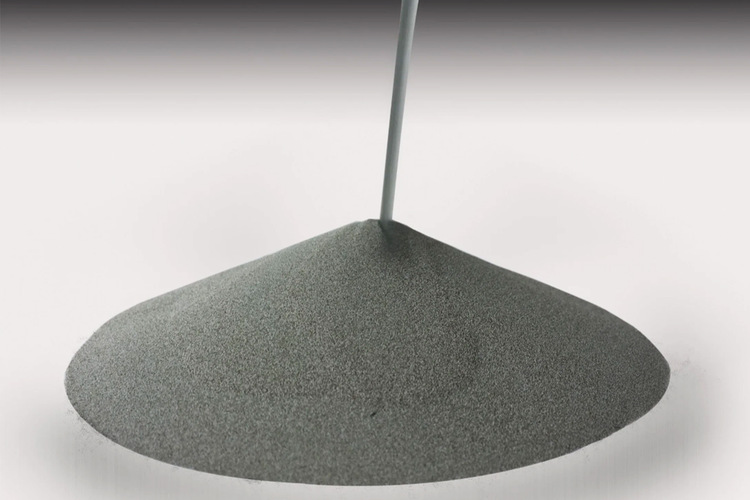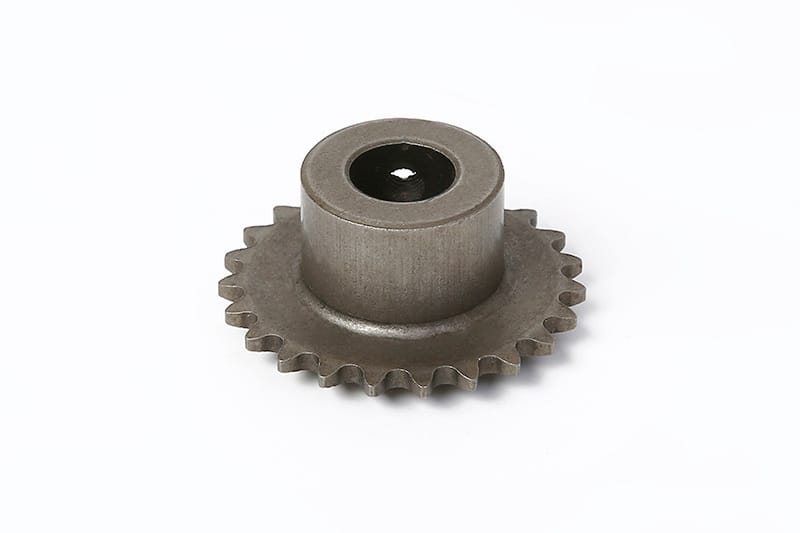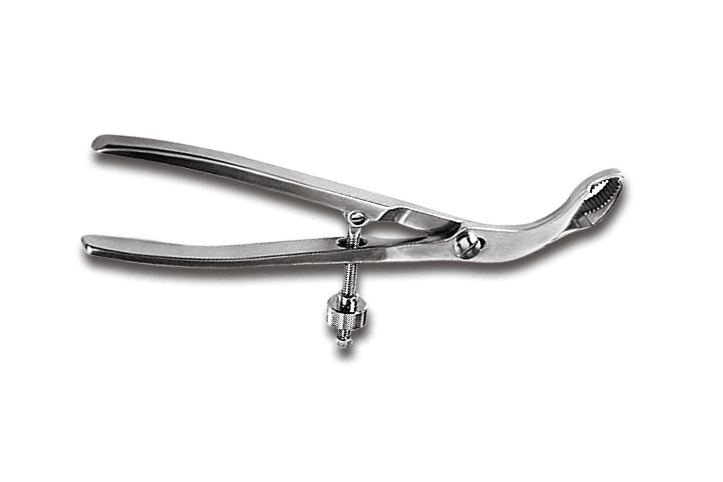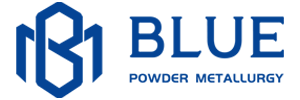Some metals are very difficult to cast and forge, such as tungsten alloys, titanium alloys, and superalloys.
Luckily, Metal injection molding (MIM) has the ability to process a wide range of metal materials.
You may be familiar with some of these materials, such as stainless steel, tool steel, and copper alloys.
Besides, there are new MIM materials like Ti-6Al-4V, 6061 aluminum alloy, and Inconel 625.
Let’s take a closer look MIM materials:
Contents
MIM Stainless Steel
Stainless steel is one of the most common MIM materials. According to the “Handbook of Metal Injection Molding”, about 50% (in Europe) to 57% (in Japan) of the total MIM parts are made of stainless steel.
MIM 316L
316L stainless steel is favored in MIM due to its brilliant corrosion resistance and good mechanical properties.

You might see it in these areas:
- Watch accessories: straps, buckles, watch frames.
- Medical: dental implants, medical equipment.
- Electronic product accessories: massager accessories, Bluetooth headset accessories.
- Automotive components.

Besides, some mobile phones also use it to polish logo, like iPhone.
Chemical Composition (%)
| Iron | Bal. |
| Carbon | 0.03max |
| Chromium | 16.00-18.00 |
|
Nickel |
10.00-14.00 |
| Silicon | 1.00max |
| Molybdenum | 2.00-3.00 |
| Manganese | 2.00max |
| Nitrogen | 0.10 |
| Sulfur | 0.030 |
Mechanical Properties
|
MFI (g/10min) |
600min |
|
Sintereddensity (g/cm3) |
7.6min |
|
Permeability |
1.06max |
|
Hardness(HRB) |
67min |
|
Tensile Strength (MPa) |
500min |
|
Elongation |
45min |
MIM 17-4 PH
17-4 PH, also known as SAE Type 630 stainless steel, needs to meet strict material standards like ASTM A564. It has high corrosion resistance similar to 304 stainless steel. It also has excellent heat resistance up to 300 °C (600 °F).
17-4 PH is widely utilized in aerospace, dental, medical and electronic products. It is also applied in internal reinforcement frames for cell phones, computer hard drives and hinges for folding phones.

Chemical Composition (%)
| Iron |
BaL. |
| Carbon | 0.07max |
| Chromium | 15.00-17.50 |
|
Nickel |
3.00-5.00 |
| Silicon | 1.00max |
| Niobium | 0.15-0.45 |
| Manganese | 1.00max |
| Copper | 3.00-5.00 |
| Sulfur |
0.030max |
Mechanical Properties
| Condition | H900 | H1025 | |
| Hardening | Temperature
(℃) Time (h) |
480 | 550 |
| 1 | 4 | ||
| Tensile Strength
(MPa) |
1310 | 1070 | |
| Yield Strength
0.2% |
1170 | 1000 | |
| Elongation
(% in 50mm) |
10 | 12 | |
| Hardness | 40 | 35 | |
440C Stainless Steel
It is widely applied in the following fields:
Surgical tools
Dental instruments
Cutting tools
Bearings

Chemical Composition (%)
| Iron | Bal. |
| Carbon | 0.95-1.20 |
| Chromium | 16.00-18.00 |
|
Nickel |
3.00-5.00 |
| Silicon | 1.00 |
| Manganese | 1.00 |
| Molybdenum | 0.75 |
Mechanical Properties
| Density | 7.5g/cm³ min |
| Tensile Strength | 700Mpa min |
| Yield Strength(0.2%) | 600Mpa min |
| Impact Strength | 115J |
| Hardness | 30-39 HRC |
| Elongation(% in 25.4mm) | 1% min |
420 Stainless Steel
Chemical Composition (%)
| Iron | Bal. |
| Carbon | 0.15-0.40 |
| Chromium | 12.00-14.00 |
|
Phosphorus |
0.04 |
| Silicon | 1.00 |
| Manganese | 1.00 |
| Sulfur | 0.03 |
Mechanical Properties
| Density | 7.55g/cm³ min |
| Tensile Strength | 700Mpa min |
| Yield Strength(0.2%) | 600Mpa min |
| Impact Strength | 82J |
| Hardness | 30-39 HRC |
| Elongation(% in 25.4mm) | 1% min |
420 stainless steel has a high carbon content (0.15-0.40), so it has good strength and hardness. And because of the 12-14% chromium content, it has excellent corrosion resistance.
You may see its application in the following:
- Surgical tools
- Medical instruments
- Bearings
- Gear shafts
- Pump Shafts
- Pump valve components
- Fasteners
- Instruments
MIM Tool Steel
Tool steel has high hardness, good wear resistance and high temperature resistance. Tool steel is usually used for cutting tools.
M2 Tool Steel
Chemical Composition (%)
| Iron | Bal. |
| Carbon | 0.18-0.23 |
| Chromium | 0.40-0.60 |
|
Manganese |
0.70-0.90 |
| Nickel | 0.40-0.70 |
| Silicon | 0.15-0.35 |
| Molybdenum | 0.15-0.25 |
| Phosphorus | 0.035 |
| Sulfur | 0.04 |
Mechanical Properties
| Density | 8.16g/cm³ min |
| Tensile Strength | 1400Mpa min |
| Yield Strength(0.2%) | 1200Mpa min |
| Melting point | 1420℃ |
| Hardness | 54 HRC |
| CTE (20-500 ℃) | 12.2 μm/m°C |
T15
T15 can reach a hardness of 65 HRC after heat treatment.
Chemical Composition (%)
| Iron | Bal. |
| Tungsten | 11.75-13.00 |
| Cobalt | 4.75-5.25 |
|
Vanadium |
4.50-5.25 |
| Chromium | 3.75-5.00 |
| Silicon | 1.50-1.60 |
| Molybdenum | 1.00 |
| Nickel | 0.00 |
| Copper | 0.25 |
| Manganese | 0.15-0.40 |
| Silicon | 0.15-0.40 |
Mechanical Properties
| Density | 8.19g/cm³ min |
| Tensile Strength | 1280Mpa min |
| Yield Strength(0.2%) | 1090Mpa min |
| Thermal expansion (20-200 ℃) | 9.9x 10-6/℃ |
| Hardness | 46.5 HRC |
S7
Chemical Composition (%)
| Iron | Bal. |
| Carbon | 0.45-0.55 |
| Chromium | 3.00-3.50 |
|
Molybdenum |
1.30-1.80 |
| Vanadium | 0.20-0.30 |
| Manganese | 0.20-0.80 |
| Silicon | 0.20-1.00 |
| Copper | 0.25 |
| Phosphorus | 0.03 |
| Sulfur | 0.03 |
Mechanical Properties
| Density | 7.83g/cm³ min |
| Tensile Strength | 1300Mpa min |
| Yield Strength(0.2%) | 760Mpa min |
| Thermal expansion (20-200 ℃) | 12.6x 10-6/℃ |
| Hardness | 41 HRC |
MIM Aluminium
Due to its low strength and difficulty in sintering process, aluminum has not been widely used in the MIM process. Aluminum 4 nm surface oxide coating may be the biggest challenge of MIM process.
But Aluminum has good thermal conductivity, is lightweight and has a low price.
Researchers at the ARC Centre of Excellence at the University of Queensland, Australia, have successfully developed sintered aluminum alloy MIM parts. They used 6061 Aluminum alloy (Al-Fe-Si-Cu-Mg-Cr) to manufacture aluminum alloy parts by MIM. The finished product hadhnear full density and good mechanical properties.
6061 Aluminium alloy
Chemical Composition (%)
|
Aluminium |
95.85-98.56 |
|
Magnesium |
0.80-1.20 |
|
Silicon |
0.40-0.80 |
|
Iron |
0.70max |
|
Copper |
0.15-0.40 |
|
Chromium |
0.04-0.35 |
|
Zinc |
0.25max |
|
Titanium |
0.15max |
|
Manganese |
0.15max |
MIM Titanium
Titanium injection molding plays an important role in the production of medical implants, surgical instruments, and dental implants
You probably know that machining titanium alloys is expensive due to tooling costs and low speeds. Fortunately, MIM is a cost-effective way to shape them.
Titanium alloys have good biocompatibility, excellent corrosion resistance, and light weight. So they are promising in the metal injection molding medical applications.

Ti-6Al-4V
Ti-6Al-4V, also called Ti64, is ideal for medical implants.
Chemical Composition (%)
|
Titanium |
Bal. |
|
Aluminium |
5.50-6.70 |
|
Vanadium |
3.50-4.50 |
|
Iron |
0.30 |
|
Carbon |
0.80 |
|
Nitrogen |
0.05 |
|
Oxygen |
0.20 |
|
Ti |
0.15max |
|
Mn |
0.15max |
Mechanical Properties
| Density | 4.20g/cm³ min |
| Tensile Strength | 750Mpa min |
| Yield Strength(0.2%) | 650Mpa min |
| Hardness | 30 HRC |
| Elongation at Break | 10% |
| Modulus of Elasticity | 114 Gpa |
Ti-6Al-7Nb
Ti-6Al-7Nb is ideal for hip prostheses, artificial knee joints, and bone plates.
Chemical Composition (%)
|
Titanium |
Bal. |
|
Aluminium |
5.50-6.60 |
|
Niobium |
6.50-7.50 |
|
Tantalum |
0.50max |
|
Iron |
0.25max |
|
Oxygen |
0.20max |
|
Carbon |
0.08max |
|
Nitrogen |
0.05max |
|
Hydrogen |
0.009max |
During the MIM process, titanium alloys are susceptible to contamination and can be processed in an inert protective gas.
Nickel Alloys
Inconel 625
Inconel 625 is one of Nickel-Base superalloys. It is popular for its excellent strength and outstanding resistance to high temperatures and corrosion.
Applications:
- Aircraft ducting systems
- Seawater equipment
- Chemical process equipment
- Turbine shroud rings
Chemical Composition (%)
| Nickel | 58.0min |
| Chromium | 20.0-23.0 |
| Iron | 5.0max |
|
Molybdenum |
8.00-10.00 |
| Niobium | 3.15-4.15 |
| Carbon | 0.10max |
| Manganese | 0.50max |
| Silicon | 0.50max |
| Phosphorus | 0.015max |
| Sulfur | 0.015max |
| Aluminum | 0.40max |
| Titanium | 0.40max |
Physical and Mechanical Properties
|
Density (g/cm3) |
8.44 |
| Melting Range (°C) | 1290-1350 |
|
Tensile Strength (MPa) |
827-1103 |
|
Yield Strength (0.2% Offset) |
414-758 |
|
Hardness (Brinell) |
67min |
|
Elongation (%) |
175-240 |
Inconel 718
Chemical Composition (%)
|
Nickel |
50-55 |
|
Manganese |
0.35 max |
|
Phosphorus |
0.015 max |
|
Sulfur |
0.015 max |
|
Silicon |
0.35 max |
|
Chromium |
17-21 |
|
Carbon |
0.08 max |
|
Molybdenum |
2.80-3.30 |
|
Columbium |
4.75-5.50 |
|
Titanium |
0.65-1.15 |
|
Aluminum |
0.20-0.80 |
|
Iron |
Bal. |
Physical and Mechanical Properties
|
Density (g/cm3) |
8.22 |
| Melting Range (°C) | 1370-1430 |
|
Tensile Strength (MPa) |
965-1035 |
|
Yield Strength (0.2% Offset) |
550-725 |
|
Hardness (Brinell) |
67min |
Biocompatible Metal
ASTM F75 (CoCr Alloy)
It has good biocompatibility and wear resistance and is preferred in: orthopedic implants and dental implants.
For example, femoral stems for hip and knee condyles, acetabular cups and tibial trays.
Chemical Composition (%)
|
Cobalt |
Bal. |
|
Molybdenum |
27.00-30.00 |
|
Nickel |
0.50max |
|
Iron |
0.75max |
|
Carbon |
0.35max |
|
Silicone |
1.00max |
|
Manganese |
1.00max |
|
Tungsten |
0.2max |
|
Phosphorus |
0.02max |
|
Sulphur |
0.01max |
|
Nitrogen |
0.25max |
|
Aluminium |
0.1max |
|
Titanium |
0.1max |
|
Bor |
0.01max |
MIM Material Properties
- Small Powder Particle Size
Most MIM alloy powder particle size is less than 22μm. For hard alloys and hard metals, it may be less than 5μm
- High packing density
- High surface purity
- Good inter-particle friction
Good friction helps it maintain its shape during degreasing process.
- Spherical shape
MIM Metal Powder Production Methods
The following are some common metal powder production methods.
Gas atomization is a metal powder production method that uses high kinetic energy gas to break up molten metal into droplets, which then solidify into powder. Gas atomized powders are mostly spherical shapes.
- Water atomization
Water atomization works similarly to gas atomization. Besides, Water atomized powder is cost-effective, but most powders are irregular in shape.
- Chemical decomposition
Chemical decomposition is a common method to make carbonyl iron powders and carbony nickel powders for metal injection molding process.
- Reduction
Reduction is another common way to make iron powder. Reduced iron powder is produced by passing iron oxide through a reducing agent, such as carbon or hydrogen.
BLUE provides advanced metal injection molding services using stainless steel, low alloy steel, titanium, and tool steel. We support part weights from 0.2 g to 300 g and complex geometries with high dimensional accuracy. Our process ensures consistent density, tight tolerances, and reliable performance across demanding applications.
FAQ
1. What is the Difference between Powder Metallurgy Materials and Metal Injection Molding Materials?
PM materials and MIM materials are produced by the same processes. However, PM requires smaller metal powders, about 50-100μm in size, while metal injection molding is 2-20μm.
2. Is 420 Stainless Steel Magnetic?
Yes, 420 stainless steel is magnetic. This type of stainless steel is part of the martensitic family materials.



